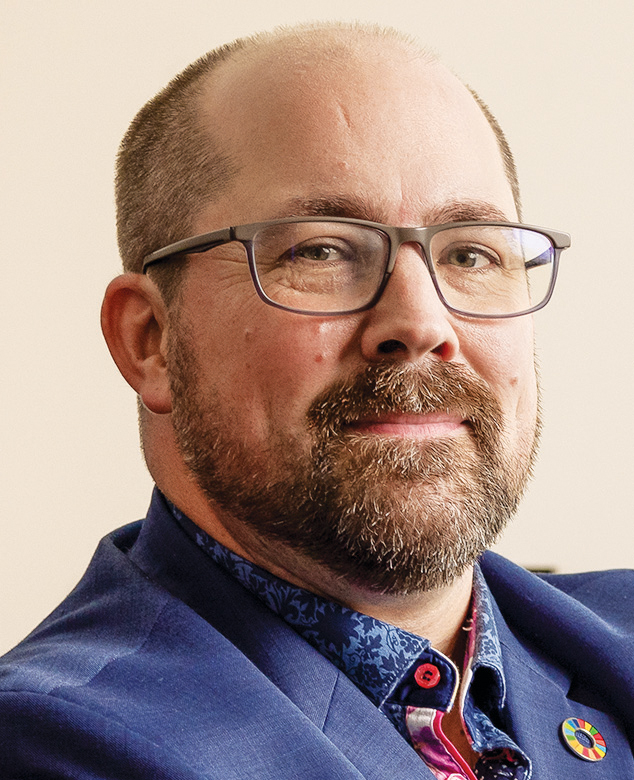Etuaptmumk: Two-Eyed Seeing

Coined by Elder Albert Marshall in 2004, Etuaptmumk is the Mi'kmaw word for Two-Eyed Seeing. It refers to learning to see from one eye with the strengths of Indigenous knowledge and ways of knowing and from the other eye with the strengths of Western knowledge and ways of knowing. This process of balancing and learning to use both eyes to take in knowledge from both cultures should be pursued by all of us.
The concept of Etuaptmumk has gained recognition across Canada, and it is one that I have come to understand as particularly true in our roles as physicians. Alongside Indigenous patients, we are to integrate our knowledge of science, anatomy, and physiology with an understanding of the lands, context, and culture. Reflectively, this is true for all our patients. As physicians, we continually integrate the knowledge we gain from medical information, scientific research, and data with our lived experiences and our state of mind and being.
On display in the main entry of the Doctors of BC office in Vancouver is artwork by Mr Rain Pierre with a caption that reads: “BC doctors walk with all Indigenous patients in the spirit of truth and reconciliation.” If we want to live this statement—that we walk alongside Indigenous patients—I encourage each of us to understand more about Indigenous ways of knowing, being, and doing.
Anyone who has heard me speak will know I introduce myself from the frame of human being and human doing. In my human being, I am a husband, father, son, brother, grandson, uncle, settler of European descent, and believer in our humanity and our creator. I do my best to acknowledge my elders and the family from which I come, and I appreciate the privilege I hold having these people in my life. In my human doing, I am a family physician, a rural generalist, a leader, and someone who has the great honor to serve as president of Doctors of BC. The frame of human being and human doing is something I have learned from Indigenous Elders and Knowledge-Keepers I have met and sat with in circle. There is a balance and a recognition of the whole of who I am when I introduce myself as more than just my profession.
Wednesday, 21 June 2023, is National Indigenous Peoples Day in Canada. As Canadians, and especially as physicians whose profession lies in healing and helping people, it is important that we understand the impact of colonialism and its lasting effects on Indigenous people’s health and well-being. We should, as encouraged by Megan Tipler, an Indigenous teacher, “learn about Indigenous brilliance and success as much as you learn about Indigenous suffering and trauma.” June is an opportune time to do so, whether by attending an event across the province, on reserve or in community, or by signing up for an educational series on cultural safety and humility (www.collaborateonhealthbc.ca/events).
Personally, I will continue to share and reflect on the knowledge I have gained from the time I spent on reserve, in the longhouse, and with Elders. Teachings like listening with my three ears, the idea of ceremony in medicine, and Two-Eyed Seeing are invaluable pieces of knowledge that I have acquired over the years from many Elders.
I cannot predict how your journey will be enriched by seeking knowledge and understanding from Indigenous Elders, for it is personal. But I can assure you that as you begin to see Etuaptmumk, your perspective on both medicine and life will undoubtedly expand. What better time than now to celebrate and revere Indigenous ways of knowing, being, and doing, and to consider integrating them into your practice.
—Joshua Greggain, MD
Doctors of BC President
hidden
 |
| This work is licensed under a Creative Commons Attribution-NonCommercial-NoDerivatives 4.0 International License. |

Wow, Josh, what an insightful and thought-provoking article. I love that philosophy and we could all benefit from giving it consideration in our own varied walks, not just doctors and not just indigenous cultures. I hope many will read this and think about how to incorporate it into their own lives. Take care.